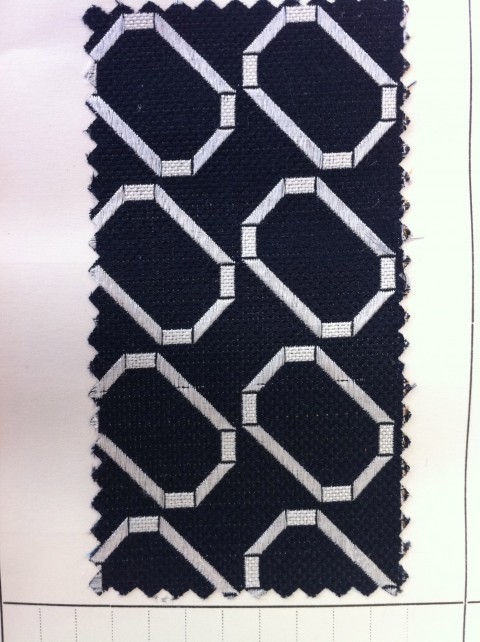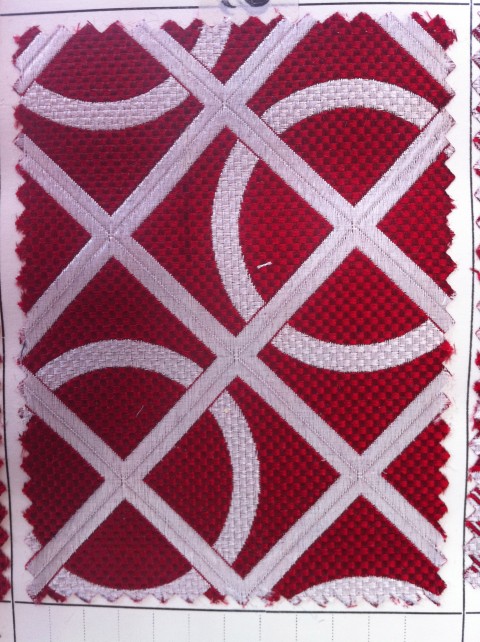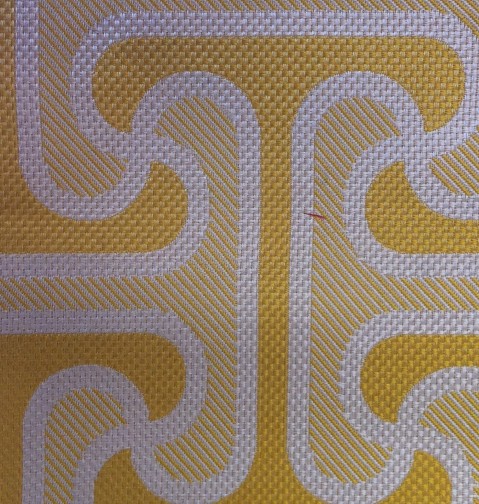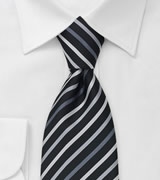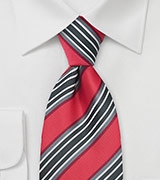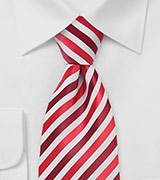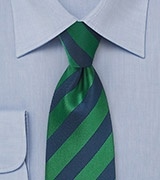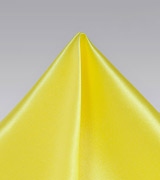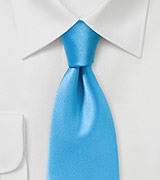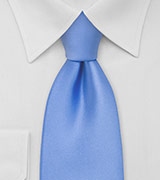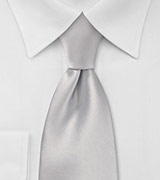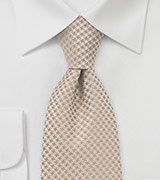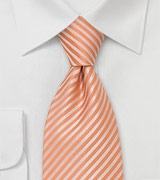The 5 Best Neckties for Vintage Tweed Jackets
Every man needs to own a tweed jacket! It is a clothing piece that will never go out of style. It is versatile, truly elegant, and perfect for Autumn and Winter wear. Although tweed sports coats originated already centuries ago in the Scottish highlands, it still remains a modern piece that suits hipster inspired street-style, as much as the kind of sophisticated country wear that you might find on Downton Abbey. While certainly a British inspired clothing piece, you don’t have to be royalty to afford these classic menswear pieces.. Personally, I found two of my favorite Harris Tweed jackets at a local thrift store for $30. Below I picked out 5 of my favorite tie styles to wear with a vintage tweed jacket. For more tweed style inspiration, you might also want to take a look at this Pinterest Bord.
Repp Stripe & Regimental Ties
Looking for a classic and truly British gentleman’s type of look? Then there is not better choice than pairing your tweed jacket with a classic repp-striped tie. Pick a tie that is classic yet still manages to add contrast. Perfect here are rich cherry-reds, burgundy, hunter green, and navy.
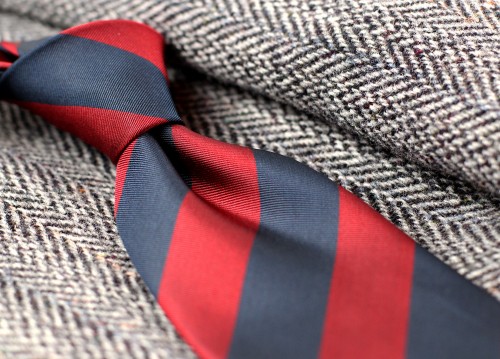
Bold Paisleys
Paisley is a perfect pattern for tweed jackets. While the paisley does date back to the 16th century in India, it still manages to add contemporary elegance. My tip: choose a paisley tie with bold classic colors in reds, yellow, rich greens, and blues.
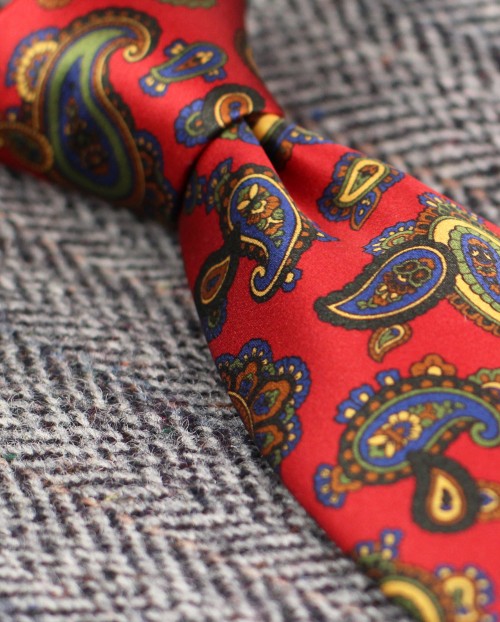
Knitted Skinny Ties
While the tweed jacket certainly suits traditional country wear, it is just as good for the modern man’s wardrobe. It all depends on how you accessorize this piece, and the modern knit skinny tie will do a perfect job. Pair this combination with a blue chambray shirt, fitted jeans, and vintage leather boots.
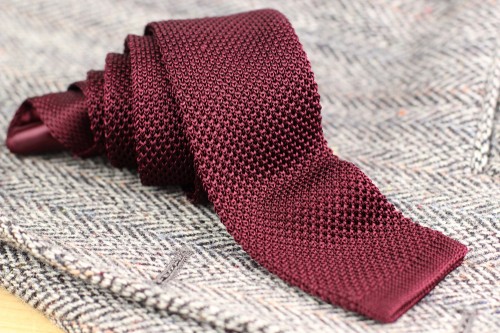
Wool Striped Ties
Another perfect piece that adds more modern flair to your vintage tweed jacket are skinny cut neckties made from wool. The coarser wool on the ties is not only a perfect compliment to the colder winter season, but it also adds interesting texture. The skinny cut of the tie (ideally 2.5″ – 2.75″) adds a younger and hipper feel.
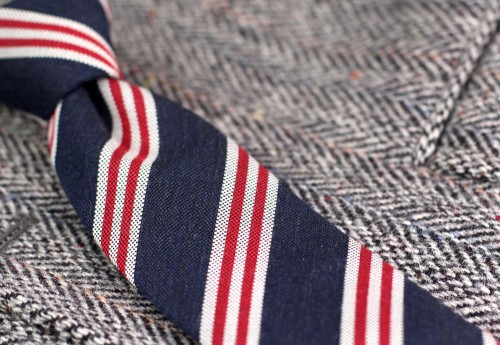
Bold Striped Ties
If all the muted autumn colors are a bit too bland for you, then add more excitement to your tweed jackets with a two-tone colored tie featuring one bold color set agains a more classic hue. The bright golden-yellow and navy striped tie shown below does just that: It adds vibrant color while still complementing a classic look.
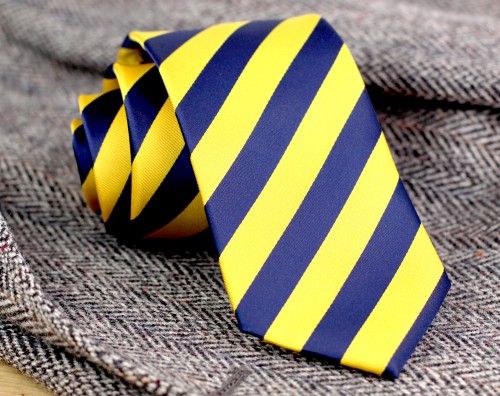
What are your favorite ties to wear with your tweed sports coats? Tell me by leaving a comment below.
Thanks for reading.
Hendrik
Tie Aficionado & Founder of Tie-a-Tie.net
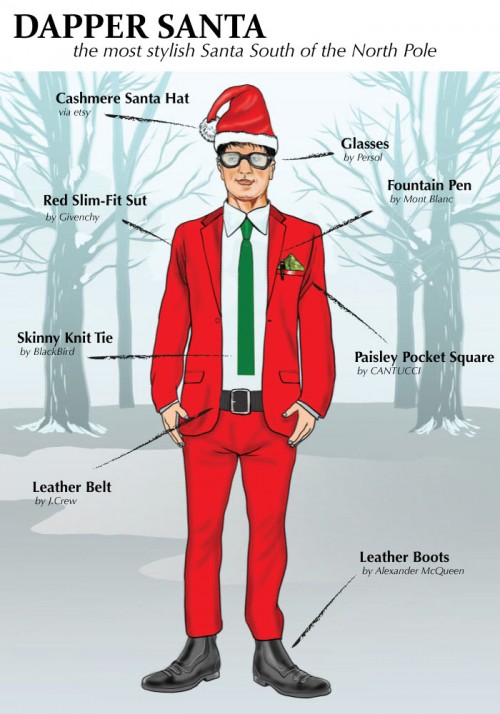

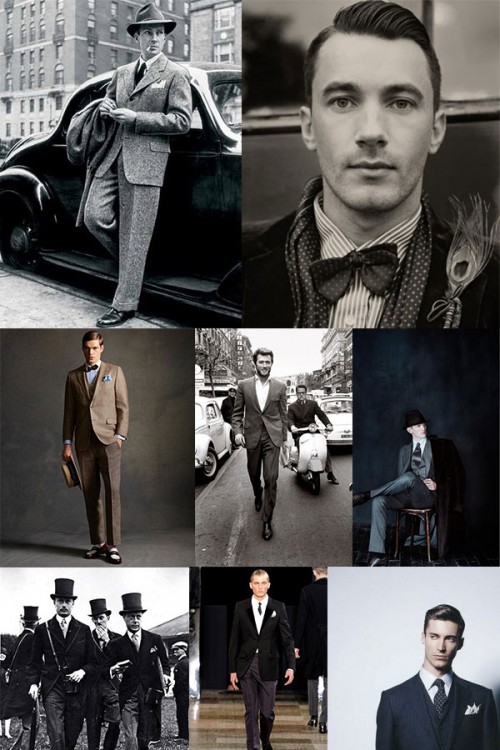
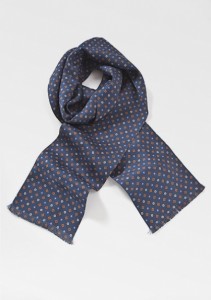 While the traditionalist would insist on an either white or ivory scarf for his black tie ensemble, personally I am a big fan of wearing a piece different in color and showing some type of subtle pattern. Navy and dark maroon are my favorites here – often decorated with fine foulard pattern. The picture left is a perfect example of a silk scarf that can be used on a black tie ensemble. While being stylish, it also serves practical function. Not only will it keep you warm, but (what’s even better), you can offer it to your date should she be getting cold. What a gentleman you are!
While the traditionalist would insist on an either white or ivory scarf for his black tie ensemble, personally I am a big fan of wearing a piece different in color and showing some type of subtle pattern. Navy and dark maroon are my favorites here – often decorated with fine foulard pattern. The picture left is a perfect example of a silk scarf that can be used on a black tie ensemble. While being stylish, it also serves practical function. Not only will it keep you warm, but (what’s even better), you can offer it to your date should she be getting cold. What a gentleman you are!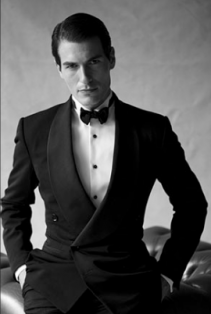 The double breasted jacket cut was especially popular during the 1930s, but that is not to say that this cut is out of style. In fact, quite the opposite is true. Recently, double breasted tux jackets have seen quite a come back. Should you opt for this style, then renting is almost never an option as 1. few rental places carry this cut, and 2. perfect tailoring is imperative as an off-the-rack double breasted jacket can easily look baggy and sloppy. Since buying is pretty much the only option, you may want to think about how often you plan on dressing in black tie…
The double breasted jacket cut was especially popular during the 1930s, but that is not to say that this cut is out of style. In fact, quite the opposite is true. Recently, double breasted tux jackets have seen quite a come back. Should you opt for this style, then renting is almost never an option as 1. few rental places carry this cut, and 2. perfect tailoring is imperative as an off-the-rack double breasted jacket can easily look baggy and sloppy. Since buying is pretty much the only option, you may want to think about how often you plan on dressing in black tie…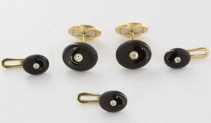 Cufflinks and button studs came into fashion around 1840s – a time when men’s white dress shirts were so heavily starched that they were too difficult to button. While not a whole lot has changed in the look and design of formal cufflinks and studs, vintage pieces add some subtle character and more soul to your wardrobe. It is one of the few pieces of acceptable men’s jewelry for this formal dress code, so why not pick something that is unique. Personally, I used a golden set decorated with black onyx that dates back to the 1920s. While it is only a tiny accessory, it was what friends commented on the most.
Cufflinks and button studs came into fashion around 1840s – a time when men’s white dress shirts were so heavily starched that they were too difficult to button. While not a whole lot has changed in the look and design of formal cufflinks and studs, vintage pieces add some subtle character and more soul to your wardrobe. It is one of the few pieces of acceptable men’s jewelry for this formal dress code, so why not pick something that is unique. Personally, I used a golden set decorated with black onyx that dates back to the 1920s. While it is only a tiny accessory, it was what friends commented on the most.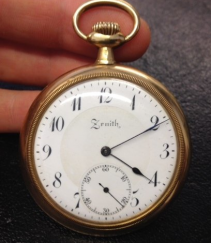 Let’s be honest, who wouldn’t want to wear a pocket watch. I was lucky enough to have one that my great grandfather ones owned. It is much more than just a time piece. If you are looking to set yourself apart from all the other black-tie uniforms, this might just be the piece for you.
Let’s be honest, who wouldn’t want to wear a pocket watch. I was lucky enough to have one that my great grandfather ones owned. It is much more than just a time piece. If you are looking to set yourself apart from all the other black-tie uniforms, this might just be the piece for you. Nowadays boutonnieres vary widely in look. Flowers, feathers, twigs, and fabrics are being used to create these lapel decorations. The traditional boutonniere however was a red or white carnation flower which was not pinned to the jacket’s lapel, but was put through the actual lapel button hole (fun fact: “Boutonniere” is the French word for “buttonhole”)
Nowadays boutonnieres vary widely in look. Flowers, feathers, twigs, and fabrics are being used to create these lapel decorations. The traditional boutonniere however was a red or white carnation flower which was not pinned to the jacket’s lapel, but was put through the actual lapel button hole (fun fact: “Boutonniere” is the French word for “buttonhole”)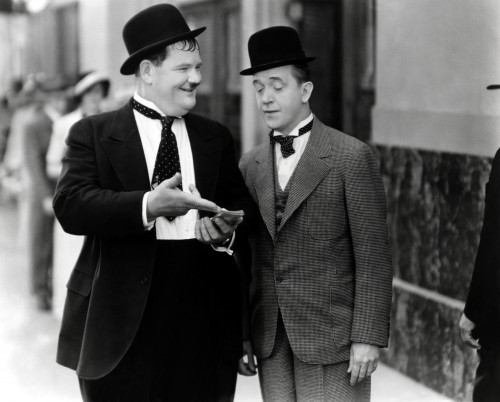
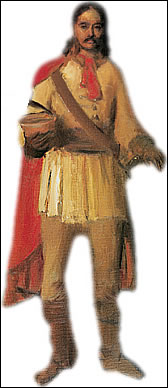
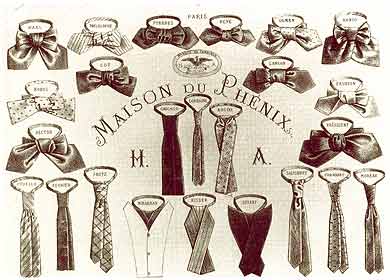
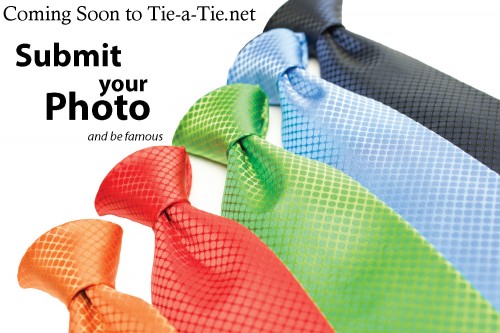
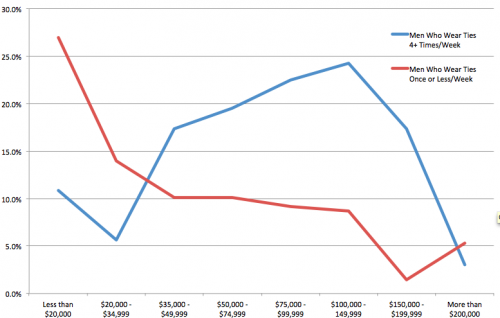
 How could you say “No” to this face? I thought that showing a begging puppy might be a good encouragement to take this brief survey. In case this isn’t enough, then maybe the chance to win a $250 gift card to our partner site
How could you say “No” to this face? I thought that showing a begging puppy might be a good encouragement to take this brief survey. In case this isn’t enough, then maybe the chance to win a $250 gift card to our partner site 